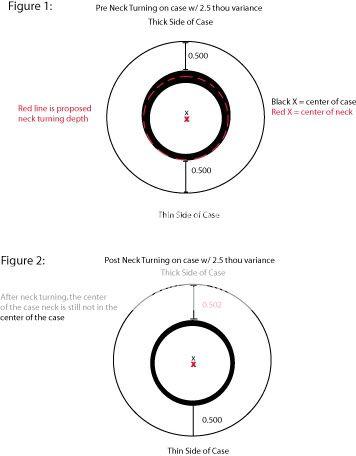There may be other issues at play here. Last time I talked to one of the Sierra tech guys, I mentioned that I had just bought 300 rds. of Win. brass and had to neck turn it because it varied from .0115 to .017 on the necks. He asked me if I fireformed my brass. I thought, "Huh?" I only thought those AI guys did that stuff.  He told me that he had 7mm Mag. brass that was on its 18th or 19th firing (I forget)because the first time he fired it, he loaded the bullets into the lands so that the case did not stretch above the belt.
He told me that he had 7mm Mag. brass that was on its 18th or 19th firing (I forget)because the first time he fired it, he loaded the bullets into the lands so that the case did not stretch above the belt.
According to him, if you don't put the bullet in the lands the first firing, the firing pin pushes the case forward to the shoulder (w/ virgin win. brass that's a long way) the case expands upon ignition and grips the walls of the chamber, then the case stretches above the belt (I imagine non-belted cases do the same thing) as the base of the case is rammed back into the bolt face. Seems very dramatic.
Have you guys heard of this. Makes sense on paper. Seems like a lot of work. I'm poised with 300 virgin brass. Do I fireform or not?
Thanks
John
According to him, if you don't put the bullet in the lands the first firing, the firing pin pushes the case forward to the shoulder (w/ virgin win. brass that's a long way) the case expands upon ignition and grips the walls of the chamber, then the case stretches above the belt (I imagine non-belted cases do the same thing) as the base of the case is rammed back into the bolt face. Seems very dramatic.
Have you guys heard of this. Makes sense on paper. Seems like a lot of work. I'm poised with 300 virgin brass. Do I fireform or not?
Thanks
John

